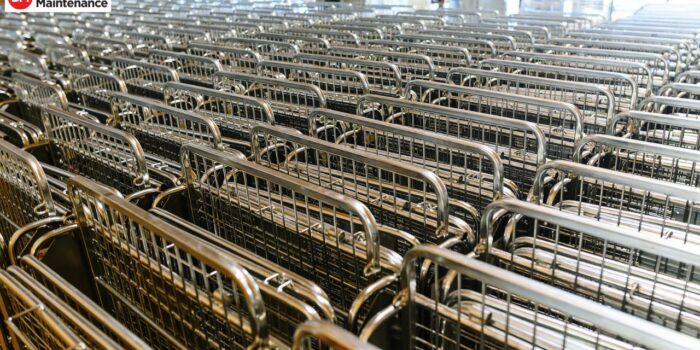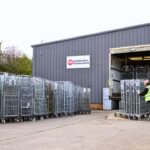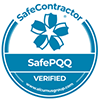5 Signs It’s Time to Upgrade Your Warehouse Material Handling Equipment
Within the complex operations of any warehouse, material handling equipment plays an indispensable role. From the mighty forklifts orchestrating pallet movements to the tireless conveyor belts ensuring a seamless flow of goods, these tools form the very foundation of efficiency and productivity. But like any machine, they have a finite lifespan. Recognising when this lifespan is nearing its end is crucial to prevent disruptions, boost efficiency, and maintain a safe working environment. Let’s explore five key indicators that signal it might be time for a much-needed equipment upgrade.
Sign 1: Frequent Breakdowns and Repairs
If your maintenance team seems to be perpetually battling equipment breakdowns, constantly putting out fires and reacting to unexpected issues, it’s a clear warning sign that your material handling equipment might be nearing the end of its useful life.
Frequent breakdowns disrupt your workflow, leading to costly downtime and impacting productivity. Each time a forklift, conveyor, or pallet jack malfunctions, your operations grind to a halt, causing delays in order fulfilment, frustrated customers, and potential lost revenue.
Beyond the immediate disruption, frequent repairs also incur significant financial costs. The expense of spare parts, labour, and external repair services can quickly accumulate, straining your budget and diverting resources away from other critical areas of your business.
While a robust preventative maintenance program can undoubtedly extend the lifespan of your equipment, it’s crucial to recognise the point of diminishing returns. As equipment ages, components wear out, and repairs become more frequent and complex. Eventually, the cost and inconvenience of constant repairs begin to outweigh the benefits of keeping the old equipment in service.
Consider these common equipment issues that can signal a need for an upgrade:
- Unpredictable Breakdowns: If your equipment is breaking down unexpectedly, causing unforeseen disruptions to your operations, it’s a sign that its reliability is compromised.
- Increasing Repair Frequency: If you find yourself calling for repairs more and more often, it suggests that your equipment is becoming increasingly unreliable and prone to failure.
- Difficulty Sourcing Spare Parts: As equipment ages, spare parts can become harder to find and more expensive to procure, further increasing repair costs and downtime.
- Obsolete Technology: Outdated equipment might lack the latest safety features, efficiency enhancements, or compatibility with modern warehouse management systems.
If you’re finding that your equipment is spending more time in the repair shop than on the warehouse floor, it’s a clear sign that an upgrade is in order. New equipment not only offers improved reliability and reduced downtime but also often comes with advanced features that can boost efficiency, enhance safety, and contribute to your business’s long-term success.
Don’t let persistent equipment issues hinder your growth and profitability. Take a proactive approach to equipment management, assess the frequency and cost of repairs, and consider the potential benefits of investing in new, modern material handling solutions.
Sign 2: Decreased Productivity and Efficiency
Is your warehouse struggling to keep up? Are order fulfilment times gradually increasing, and is your hardworking team finding it increasingly challenging to meet the demands of your growing business? If so, the culprit might be lurking in plain sight: your material handling equipment.
Outdated or inefficient equipment can act as a silent bottleneck, quietly hindering productivity and gradually slowing down your entire operation. Imagine forklifts struggling to lift heavy loads, pallet jacks with worn-out wheels causing delays, or manual processes that consume valuable time and resources. These inefficiencies accumulate over time, leading to missed deadlines, increased labour costs, and frustrated customers.
Meanwhile, advancements in technology have revolutionised material handling equipment, offering a range of features that can significantly boost efficiency and streamline your workflow:
- Automation: Automated systems can handle repetitive tasks like picking, packing, and sorting with speed and precision, freeing up your workforce to focus on more complex and value-added activities.
- Ergonomic Design: Equipment designed with ergonomics in mind reduces operator fatigue and strain, leading to improved productivity, fewer injuries, and increased employee satisfaction.
- Data Tracking Capabilities: Real-time data tracking and analytics provide valuable insights into your operations, allowing you to identify bottlenecks, optimise workflows, and make data-driven decisions to improve efficiency.
If you’re noticing a decline in productivity despite your team’s best efforts, it’s a clear sign that your equipment might be holding them back. Upgrading to modern material handling solutions can revitalise your warehouse operations, enabling you to:
- Increase throughput: Handle more orders and process inventory faster.
- Reduce labour costs: Streamline workflows and minimise manual handling.
- Improve accuracy: Minimise errors and improve order fulfilment.
- Enhance customer satisfaction: Meet or exceed customer expectations with faster and more reliable deliveries.
Don’t let outdated equipment stifle your growth. Investing in modern material handling solutions can unlock a new level of efficiency, productivity, and profitability for your business. Embrace the power of technology and unleash the full potential of your warehouse operations.
Sign 3: Safety Concerns
Safety is paramount in any warehouse environment, and compromising on it is simply not an option. Outdated or poorly maintained material handling equipment can turn your warehouse into a minefield of potential hazards, putting your employees at risk and exposing your business to significant legal and financial liabilities. Worn-out brakes, malfunctioning safety features, or obscured visibility can all contribute to accidents that lead to injuries, lost time, and decreased morale.
Modern material handling equipment is designed with safety at its core. Advances in technology have led to the incorporation of various features that significantly enhance workplace safety, including:
- Improved Visibility: Enhanced lighting, clear sightlines, and ergonomic designs all contribute to better operator visibility, reducing the risk of collisions and accidents.
- Ergonomic Controls: Intuitive and comfortable controls help reduce operator fatigue and strain, promoting safer and more efficient handling of equipment.
- Collision Avoidance Systems: Advanced sensors and warning systems can detect potential collisions and automatically slow down or stop equipment, preventing accidents and protecting both workers and inventory.
- Stability Control: Features like stability control and load sensors help prevent tip-overs and other accidents caused by improper loading or manoeuvring.
- Operator Presence Detection: These systems ensure that equipment only operates when the operator is in the proper position and in control, preventing unauthorised use and potential accidents.
If you’re experiencing recurring safety issues, even near-misses, it’s a clear sign that your equipment is no longer providing adequate protection for your workforce. Ignoring these warning signs can have dire consequences, not only for your employees’ well-being but also for your business’s reputation and financial stability.
Prioritising an equipment upgrade is an investment in the safety and well-being of your team. By choosing modern material handling solutions with advanced safety features, you’re not just mitigating risks, you’re creating a culture of safety that promotes a more productive and positive work environment. Remember, your employees are your most valuable asset, and their safety should always be a top priority.
Sign 4: Inability to Meet Growing Demands
Is your business thriving and experiencing a surge in growth? Are you finding it increasingly challenging to keep pace with the rising tide of orders or struggling to accommodate new product lines within your existing warehouse infrastructure? If so, your material handling equipment might be the bottleneck holding you back.
Outdated equipment, designed for a different era and scale of operations, might lack the capacity or flexibility to handle the demands of a growing business. Perhaps your forklifts can’t lift the heavier pallets required for your new product line, or your conveyor system is constantly jammed due to increased throughput. These limitations not only hinder your ability to fulfil orders efficiently but can also lead to missed opportunities and frustrated customers.
In today’s fast-paced market, scalability and adaptability are key. Modern material handling solutions offer a range of features that enable you to seamlessly expand your operations and meet evolving customer expectations:
- Higher Capacity Equipment: Upgrading to forklifts with greater lifting capacities, conveyors with increased throughput, or storage systems with expanded storage density can significantly boost your warehouse’s capabilities and accommodate growing inventory levels.
- Modular and Flexible Systems: Investing in modular material handling systems allows you to adapt your warehouse layout and workflows as your needs change. These systems can be easily reconfigured or expanded to accommodate new product lines, seasonal fluctuations, or shifts in demand.
- Automation and Robotics: Incorporating automation and robotics into your material handling processes can significantly improve efficiency, accuracy, and throughput. Automated systems can handle repetitive tasks, freeing up your workforce to focus on more complex and value-added activities.
- Data-Driven Insights: Modern material handling equipment often comes equipped with advanced sensors and data tracking capabilities. This valuable data can provide insights into your operations, enabling you to identify bottlenecks, optimise workflows, and make informed decisions about future investments.
By investing in modern material handling solutions with higher capacity, adaptability, and automation capabilities, you can proactively position your business for growth. You’ll be able to handle increased order volumes, accommodate new product lines, and meet customer expectations without costly delays or disruptions. Remember, your material handling equipment is not just a tool; it’s a strategic asset that can empower your business to thrive in an ever-changing market.
Sign 5: High Energy Consumption and Maintenance Costs
Older equipment, while often reliable, can become a financial drain over time due to escalating energy consumption and maintenance costs. As technology advances, newer models are designed with energy efficiency in mind, incorporating features such as:
- Electric-Powered Motors: Transitioning from traditional fuel-powered equipment to electric alternatives can lead to substantial savings on fuel costs and reduce your carbon footprint. Electric motors are also quieter and require less maintenance than their combustion engine counterparts.
- Intelligent Controls: Modern material handling equipment often features sophisticated control systems that optimise energy use based on real-time demands. These systems can adjust motor speeds, power output, and even idle times to minimise energy wastage and improve overall efficiency.
- Regenerative Braking: Some electric-powered equipment utilises regenerative braking, where the energy generated during braking is captured and stored in the battery, further extending operating time and reducing energy consumption.
- LED Lighting: Replacing traditional bulbs with energy-efficient LED lighting can reduce energy consumption and maintenance costs associated with frequent bulb replacements.
Beyond energy savings, older equipment tends to require more frequent maintenance and repairs. As parts wear out and become obsolete, sourcing replacements can become challenging and expensive. Breakdowns become more frequent, leading to costly downtime and disruptions to your operations. Investing in newer equipment can minimise maintenance requirements and reduce the risk of unexpected failures, ensuring smooth operations and greater predictability.
If you’re noticing a steady increase in your energy bills or find yourself shelling out more and more on repairs and maintenance, it’s time to take a closer look at your equipment’s age and efficiency. Upgrading to newer, more energy-efficient models can cause significant long-term cost savings, enhance productivity, and reduce your environmental impact. It’s an investment that pays off multiple ways.
Upgrading Your Warehouse Equipment: Solutions from Distribution Maintenance
Recognising the need for an upgrade is one thing, but finding the right equipment to suit your needs is another. At Distribution Maintenance, we offer a range of high-quality material handling solutions designed to enhance efficiency, safety, and productivity in your warehouse.
- Roll Cages: Our robust and versatile roll cages are ideal for secure storage and transportation of goods within your warehouse or across your supply chain. We offer a variety of sizes and configurations to meet your specific needs.
- Magnum Containers: These heavy-duty containers are perfect for bulk storage and transportation of large or heavy items. They’re built to withstand tough conditions and ensure the protection of your valuable goods.
- Pallet Cages: Our pallet cages offer a secure and efficient way to store and transport palletized goods. They’re designed to maximise space utilisation and streamline your material handling processes.
All our products are manufactured to the highest standards, using durable materials and incorporating the latest safety features. We also offer repair and maintenance services to ensure your equipment remains in optimal condition throughout its lifespan.
Conclusion
Recognising the signs that your warehouse material handling equipment needs an upgrade is crucial for maintaining operational efficiency, ensuring workplace safety, and supporting business growth. If you’re experiencing frequent breakdowns, decreased productivity, safety concerns, an inability to meet demand, or escalating costs, it’s time to consider investing in new equipment.
Partnering with a reliable supplier like Distribution Maintenance can help you make informed decisions about equipment upgrades and ensure a smooth transition. Our team of experts can assess your needs, recommend suitable solutions, and provide ongoing support to optimise your warehouse operations.
Remember, a well-equipped warehouse is a productive warehouse. Don’t let outdated equipment hold your business back – invest in the tools you need to thrive in today’s competitive landscape.
Ready to take the next step toward a more efficient and safer warehouse? Contact Distribution Maintenance today for a free consultation and equipment assessment. Our team of experts can help you identify areas for improvement and recommend the right material handling solutions to meet your unique needs. Don’t let outdated equipment hold your business back – invest in your future success today! Contact us today by our email info@distributionmaintenance.com or call us at 01279 883 286 today.









